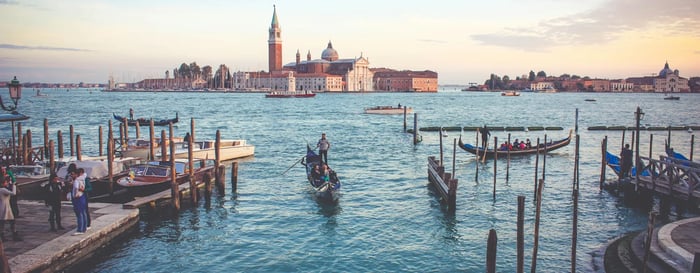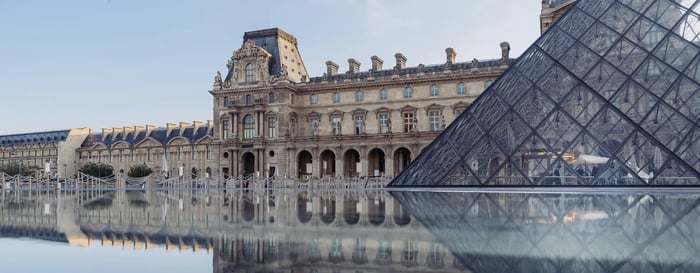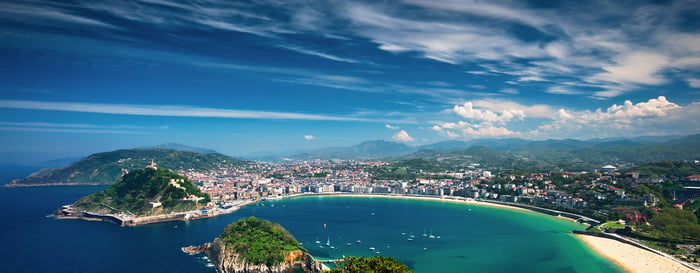Picture an idyllic vineyard and Garden Creek Ranch in Sonoma County could be it. Follow a meandering road lined with valley oaks and ponderosa pines, then pass by a river after which the ranch is named. Keep driving until you reach the base of a 1200-metre high mountain, then follow a driveway that leads you through the vines to reach a 50-year-old barn built from Californian redwood lumber. It’s here you will find an award-winning winery creating Bordeaux and Chardonnay.
This 100-acre property in Alexander Valley, Sonoma County, is more than a passion project, it’s a home. Created by former cattle farmer James Miller in 1964, it is now home to the second generation of Millers – Justin, his wife Karin and their children Elsa, 13, and Leif, 11. This wasn’t necessarily going to be Justin’s future. He had a scholarship to Rhode Island School of Design, but then the long-term foreman of the farm left and Justin’s father asked him if he would take over the land. This could be a daunting task for any 19 year old. But the teenager rose to the challenge and turned it into an organic, sustainable farm that focused on growing ultra-premium grapes.

With the help of his childhood sweetheart Karin, whose family were also successful winegrowers, the twosome was able to take Garden Creek Ranch to the next level. Justin’s family had been successfully selling its grapes to large winemakers in the region. But Justin and Karin could see that the wine drinker was becoming more sophisticated and there was an opportunity to create more premium grapes.
The couple started pruning the vines and reducing the output from eight to two tonnes per acre to improve the quality of the fruit. They also looked how they could make the soil richer. Justin negotiated with the wineries to take back the unwanted seed and grape skins from the grape deliveries, which they turned into compost.
They also grew crops such as beans and sweet peas, with tuberous roots. When the crops died they would fill the soil with healthy microbial content so they could use less water on the land. Apart from the great leaps forward that they were making, they also had Justin’s father’s journals to turn to. Each day during his working career he had made a point of recording the weather, the temperature and what they were doing in the field. The wider Sonoma community were also happy to share any knowledge.
It wasn’t long before Justin was starting to produce great flavours in the vineyards. So in 2000, Karin persuaded Justin that they should start making their own wine. “I feel we know the business – we have been picking grapes since we were young. We were not coming at it blind. We felt very confident,” says Karin.
However, the start-up costs that come with creating wine are expensive so the young couple bought second-hand equipment, turned an old redwood barn into a winery and crushed grapes at a friend’s vineyard so they could minimise costs. While the wine’s beginnings may have been meagre Karin said they had a secret weapon all along: “The best equipment doesn’t create the best wine. It’s about the location of the vineyards.”

From the start, the duo was clear that they didn’t want to produce mass market wine. They wanted to enjoy the artisanal act of wine making and create a vintage that would stop people in their tracks. Karin said: “We were chasing flavours in the fields”. They chose to create just two just wines – a Bordeaux blend and a Chardonnay and they were so dedicated to creating the perfect vintage that they chose to lay their wine down for seven years before they released it to the market.
After tasting endless blends, the couple bottle the wine that they wanted in 2000 and then released it in 2007 - the start of the Great Recession. “We thought ‘argh what are we doing?’,” said Karin. “But luckily people who buy sophisticated wines keep buying. So we had a good beginning.”
So their working year that used to focus on the harvest in November and mid-December, now included tactical pruning in January (so they could make sure that grape varieties such as Chardonnay were ready first to pick first), as well as checking bottles and analysing lots and then bottling the wine in August or September. They decided to keep the output small choosing to release only 1500 cases.
But small is beautiful says Karin: “We are family farmers. Some people will arrive in California, buy a beautiful piece of property worth millions of dollars and then hire a winemaker. We still have the same families working with us who worked on the farm in 1964.”
Now the third generation of Millers are learning how to be farmers. Daughter Elsa and son Leif will often help out during harvest time. “Their job is to remove the leaves from the gondola where the grapes are collected. We don’t keep them out of school, like my parents used to when they needed help with the harvest,” laughs Karin. “But they love it.”

Leif is proving to be a mini Justin. He has a similar interest in building and fixing and he is fascinated by the financial side as he is taught entrepreneurship at school. While Elsa is an equestrian who loves just to be outside and will help her parents in the garden.
Karin and Justin are keen for the children to take over the business. “We talk about it as this farming for us is a legacy, a history and we want it to become greater and deeper. They need to chase their dreams. But they do realise what they have here. They also know it’s not usual to have 100 acres of land in a beautiful part of the world,” says Karin.
While it is a picturesque place to live, Karin accepts that farming can be a tough. In 2018 the family were asked to leave their home as close to 6,000 homes were destroyed by wildfires in neighbouring Napa Valley.
“There were about 60 fires in the area and there was a fire right above us on the hillside,” said Karin. “The wind was equally terrifying as it reached 80 to 90mph.”
Karin drove the children to a friend’s house in town, while Justin helped their neighbours save their barns and make sure that everyone had made it to safety.
The winds kept the fire at bay, blowing the flames back up the mountain, but the farm suffered heavily from smoke damage. “Luckily, we had delivered the fruit to our winery contract, but we were yet to pick the grapes for our own wines,” says Karin. “We meant to start picking the grapes on the Monday and the fires hit on Sunday night.”
Twenty-five tonnes of grapes had been tainted by smoke. “Justin and I spoke about it and we said ‘let’s not make wine out of this. We can’t compromise’.” So that was the whole of their 2018 harvest ruined.
It took the family about a month to get the operation running full steam again. They had been hit a little by tourists cancelling trips, but not as hard as some. The family dusted themselves down and started concentrating on new projects.

While the wines have been a success, they choose not to rest on their laurels. “The basis of a good marriage is to push each other,” says Karin. Pushing each other means, launching two new vineyards, where they will grow white Rhônes and pinot noir for their new brand Warnelius-Miller. “We have always grown cabernet sauvignon, which Alexandra Valley is famous for and this comes under our Garden Creek brand,” says Karin. “We are adding Warnelius-Miller as the extension of our creativity.”
They are also opening a guest house at Garden Creek Farm where members can experience life on the vineyard. They will also host wine pairing dinners. On top of this they also plan to introduce their wine to a new audience and join with restaurants in Europe and Asia.
When they are not working the vineyard, they will escape to the beach to go kitesurfing or enjoy a family bike ride through the Californian countryside. Though it’s clear that vines run through their veins as apart from visiting exotic locales on holiday they will also make a point of visiting international vineyards.
Karin knows that their hard work has been worth it. “When people come, people see that we are intelligent farmers creating thought provoking wines,” says Karin. “We only have two vintages to taste, but when people take the wines in the mouths and it runs across their palates and they look at us in awe.”
Photography: Eric Wolfinger
Gourmet Tour of Bordeaux and Paris
- Visit Saint-Julien to learn how to taste fines wines
- Tour Bordeaux to sample the finest wines in various appellations
- Experience the subterranean church and cemetery at Saint-Emilion
- Sample cognac and learn how to pair it with food in the Cognac region
- Enjoy a private cruise on the River Seine followed by dinner at a renowned Parisian restaurant
Northern Spain Delights
Madrid Basque Country Barcelona Spain Europe
-
See famous artworks by Spain’s most celebrated artists
-
Enjoy a pintxos tour of San Sebastian with a local
-
Go wine tasting in La Rioja, Spain’s most renowned wine region
-
Discover the futuristic architecture of Bilbao
-
Explore Catalan Modernism with a tour of Gaudi’s most extravagant architecture








